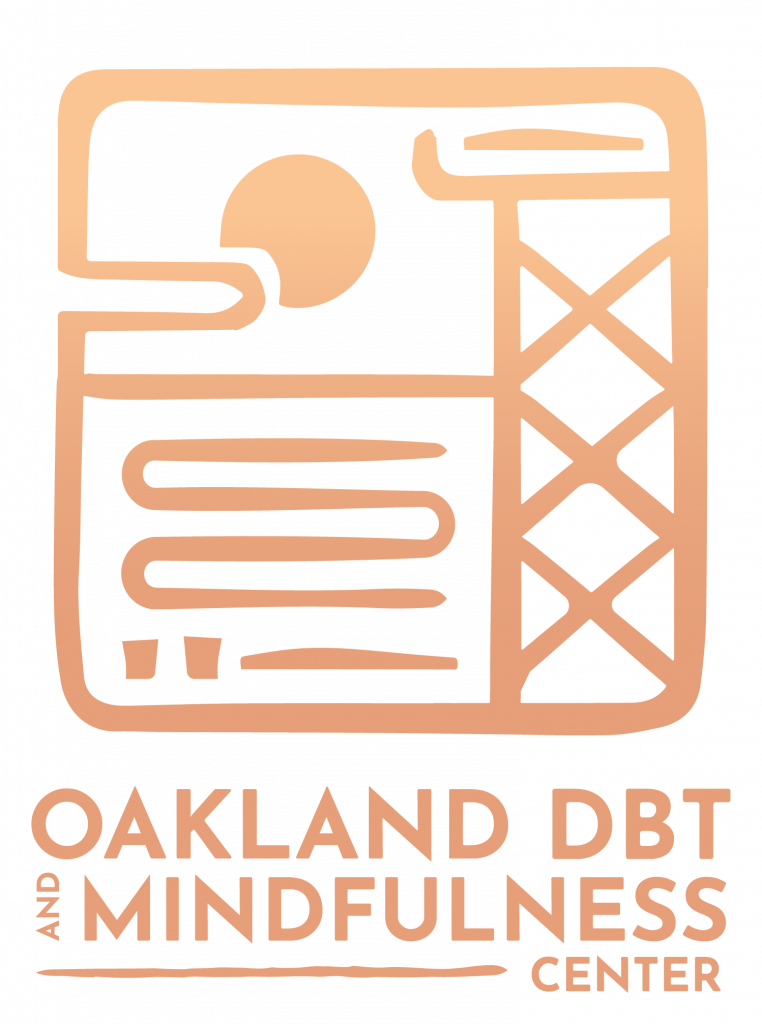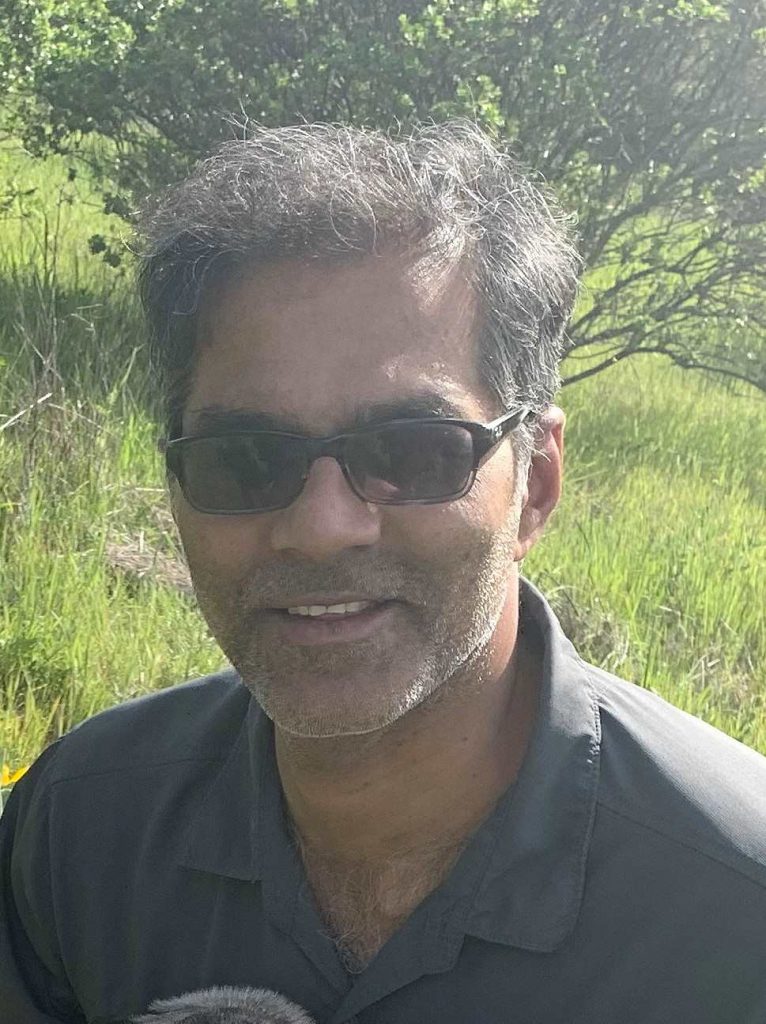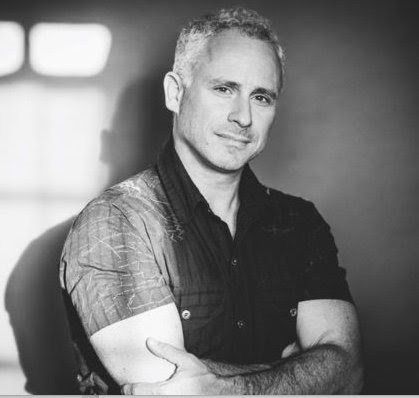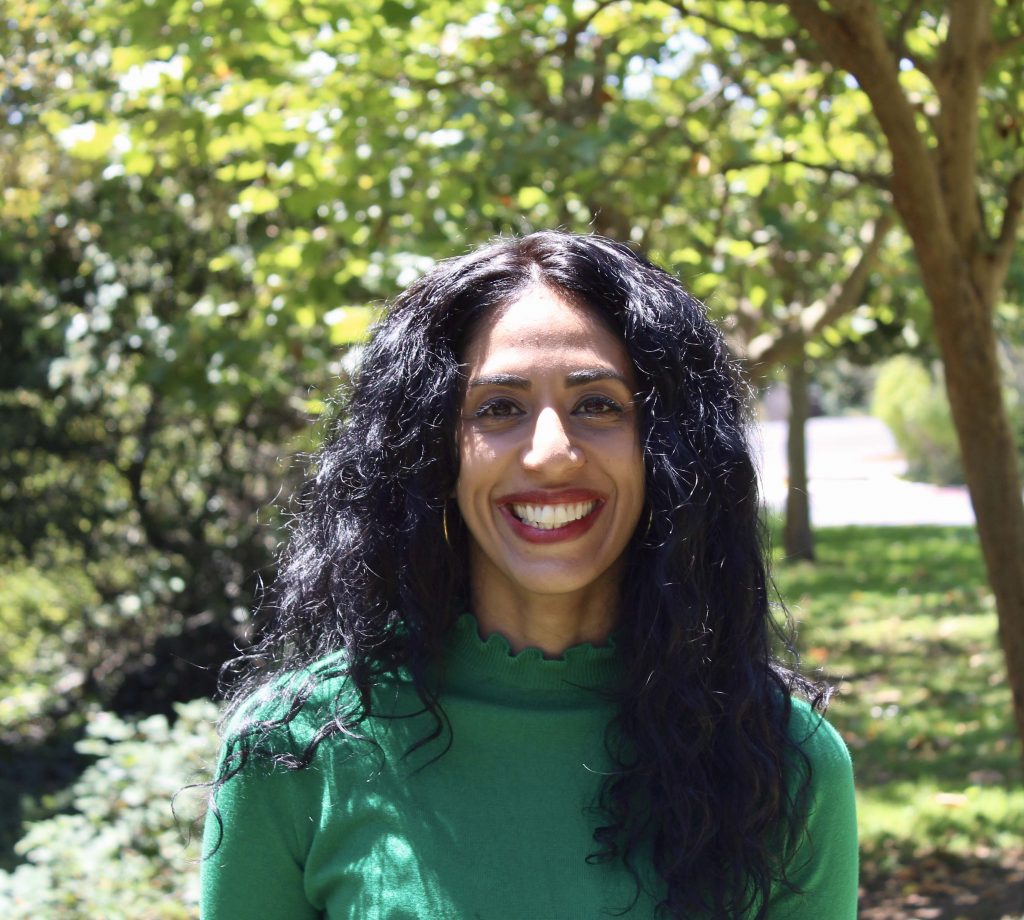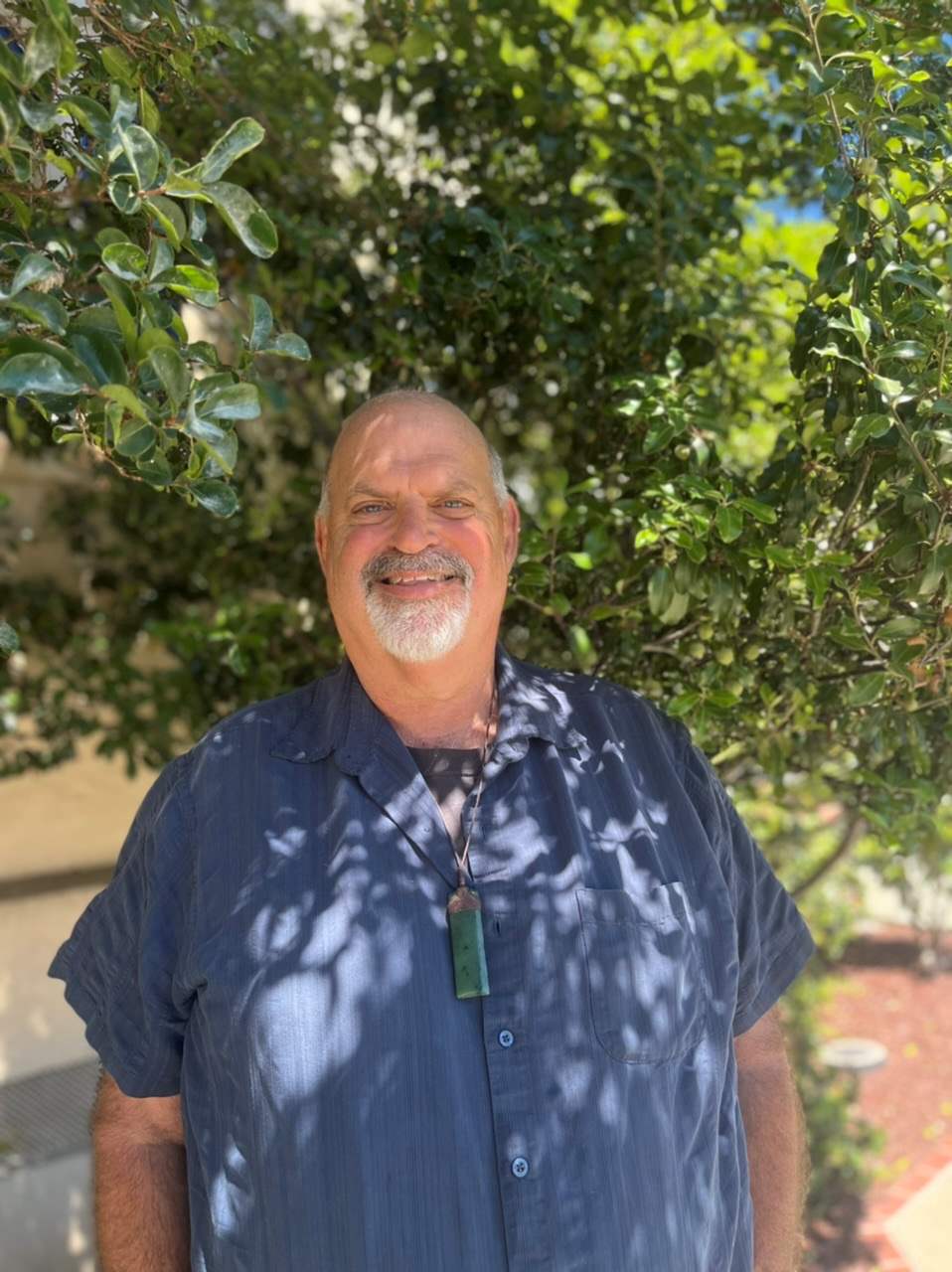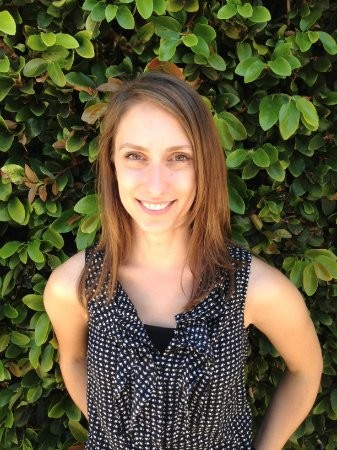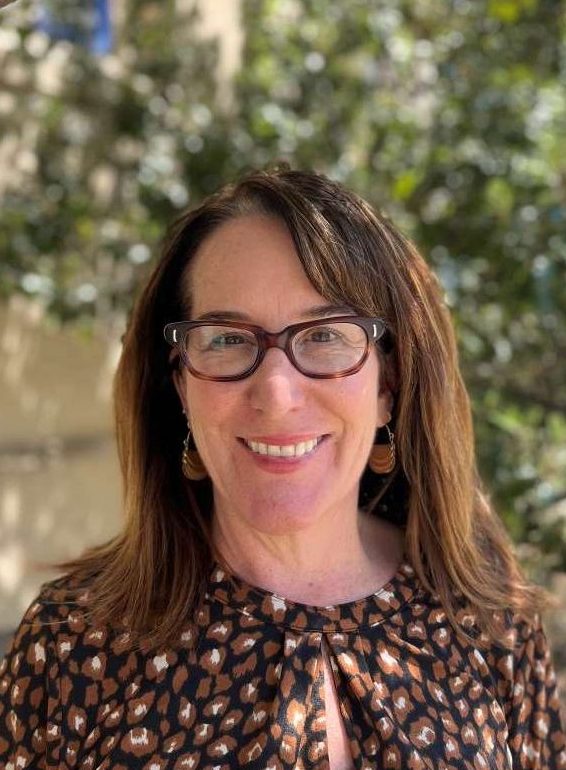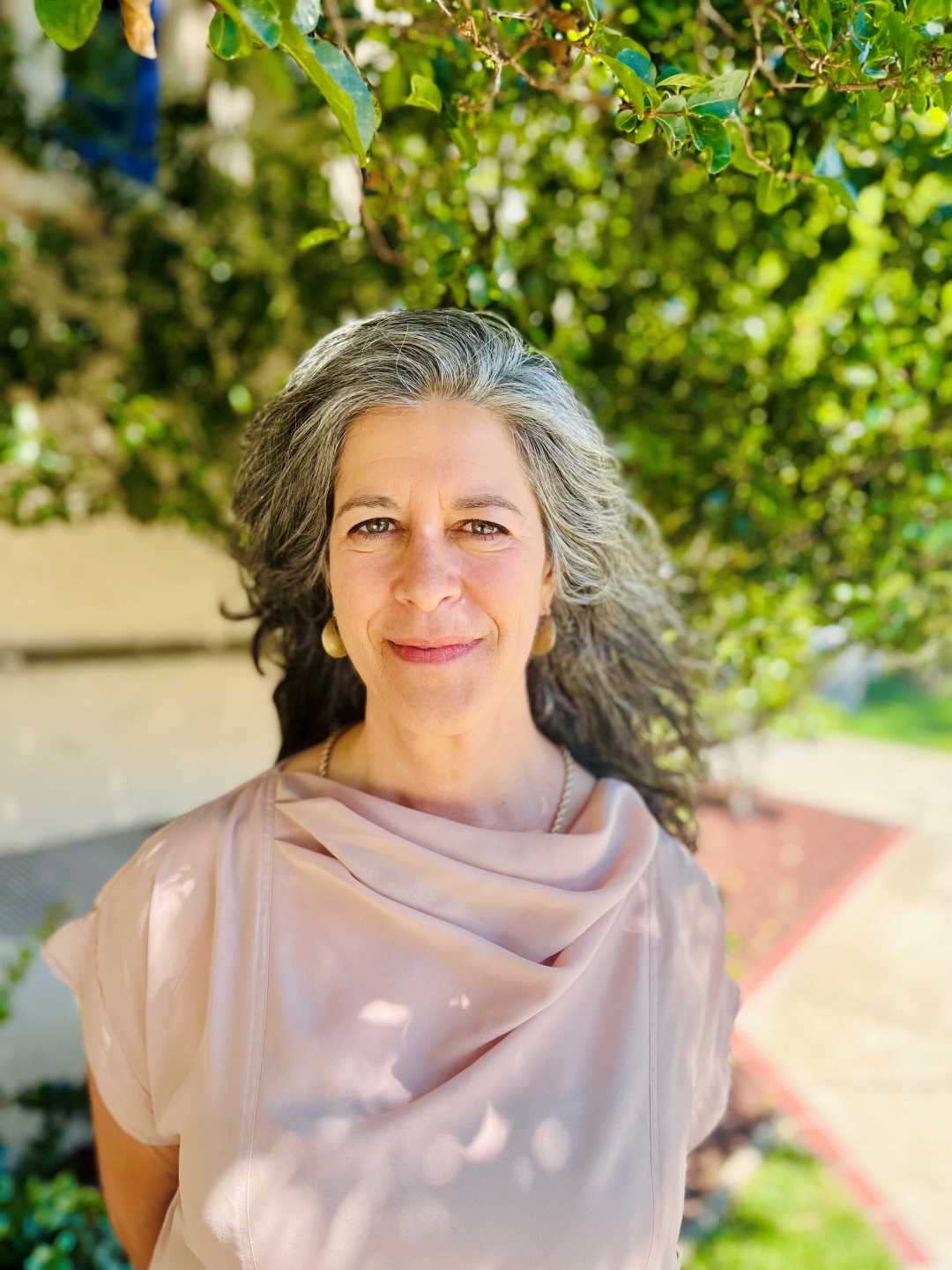Dialectical Behavior Therapy (DBT) is recognized for its practical, skill-based approach, which empowers individuals to gain a deeper understanding of themselves and modify unhelpful behaviors. One of the most powerful strategies used within this therapeutic model is chain analysis. If you’ve been searching for clarity on how many stages are in chain analysis DBT, you’re not alone. This structured tool is often discussed in therapy sessions, academic discussions, and self-help circles, but not everyone is aware of the exact steps involved.
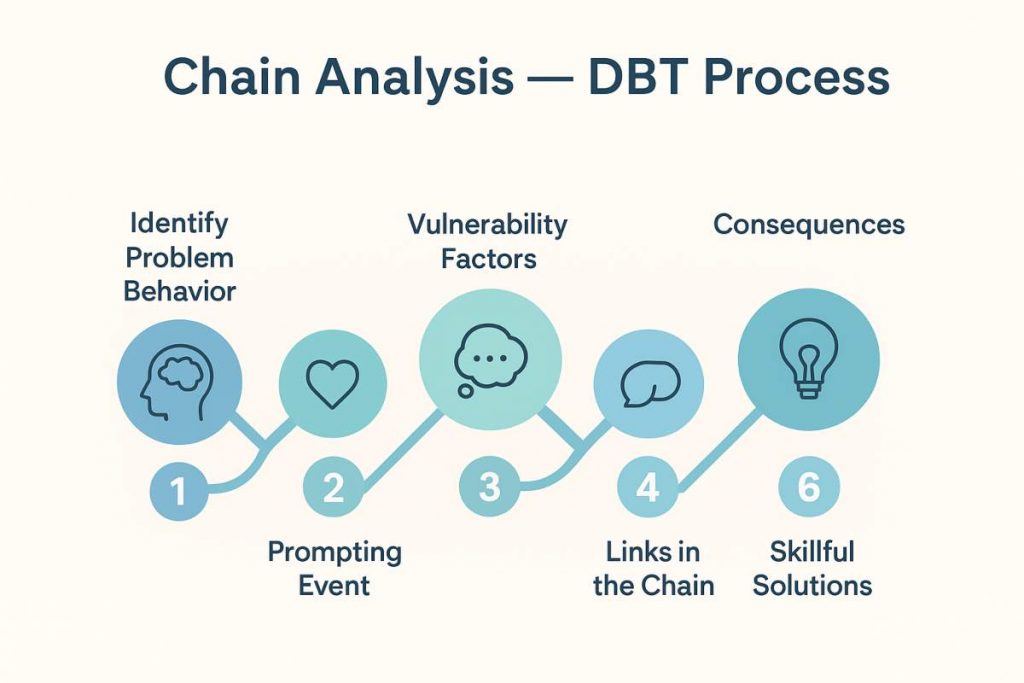
In this guide, you’ll discover not only the number of stages in chain analysis but also the deeper meaning behind each one, real-world applications, and insights on how it can transform emotional awareness and behavioral change.
If you’d like to explore DBT in greater depth, you can also read What is DBT? What is dialectics?
What Is Chain Analysis in DBT?
Before diving into the stages, it’s essential to understand what chain analysis actually is.
Chain analysis is a structured process used to examine problematic behaviors by breaking them down into smaller, understandable parts. Instead of viewing a behavior in isolation, it considers it the final link in a chain of events, thoughts, emotions, and triggers. By walking through each step of the chain, individuals gain clarity about why something happened and how it can be handled differently in the future.
Think of it as detective work for your emotions and actions: you follow the trail backward and forward to spot patterns, vulnerabilities, and opportunities for change.
Also Read: What Is Virtual DBT Therapy
Why Is Chain Analysis Important in DBT?
DBT focuses on four major skill areas: mindfulness, distress tolerance, emotion regulation, and interpersonal effectiveness. Chain analysis integrates these skills by showing where and how they can be applied.
Here’s why it matters:
- Awareness: Helps identify hidden triggers that often go unnoticed.
- Clarity: Provides a straightforward narrative of “how I got here” instead of vague reflection.
- Empowerment: Shows that there were points where different choices could have been made.
- Skill-Building: Pinpoints exactly which DBT skills might have prevented escalation.
- Change-Oriented: Turns unhelpful patterns into actionable insights.
For individuals dealing with intense emotions, self-destructive behaviors, or chronic stress, this method becomes a roadmap to more effective coping strategies.
How Many Stages Are in Chain Analysis DBT?
Chain analysis is generally divided into six main stages. While different therapists may adapt or expand the process slightly, these six steps form the backbone of the approach.
Let’s explore each stage in detail.
Stage 1: Identifying the Problem Behavior
The starting point is simple but critical: clearly define the behavior you want to analyze. Instead of vague descriptions like “I messed up” or “I lost control”, chain analysis requires specificity.
Examples:
- I yelled at my partner during an argument.
- I skipped work because of anxiety.
- I engaged in binge eating late at night.
Why this matters: Specificity removes shame and judgment. Instead of labeling yourself, you’re naming the action. This makes it easier to explore and address the issue.
Stage 2: Describing the Prompting Event
Every behavior has a trigger. The prompting event is the immediate situation or internal experience that sets the chain in motion.
This could be:
- A comment from a coworker
- Receiving a difficult text message
- Remembering a painful memory
- Physical discomfort or illness
The goal here is to locate the spark that ignited the sequence. This step is crucial because once you identify your triggers, you can anticipate and manage them more effectively in the future.
Stage 3: Recognizing Vulnerability Factors
Sometimes the same event doesn’t always lead to the same reaction. Why? Because vulnerability factors play a huge role.
Examples of vulnerabilities include:
- Lack of sleep
- Hunger or poor nutrition
- High levels of stress
- Hormonal changes
- Substance use
- Lingering emotional pain
Understanding vulnerabilities helps explain why a seemingly minor event can feel overwhelming. This awareness enables individuals to take preventive steps, such as prioritizing rest and practicing self-care, before vulnerabilities accumulate and become more severe.
Stage 4: Mapping the Links in the Chain
This stage is the heart of the process. You carefully trace the sequence of events, thoughts, feelings, urges, body sensations, and actions that connected the trigger to the problem behavior.
For example:
- Trigger: Argument with a friend
- Thought: They don’t care about me.
- Emotion: Anger and sadness
- Body Sensation: Tight chest, racing heart
- Urge: Wanting to shut down or lash out
- Action: Sending an impulsive, angry text
Breaking it down like this reveals that the behavior didn’t emerge out of nowhere—it was a series of interconnected actions that built upon one another.
Stage 5: Identifying the Consequences
No behavior exists without consequences, both positive (in the short term) and harmful (in the long term).
Examples:
- Short-term relief: The angry text might feel satisfying in the moment.
- Long-term cost: It may damage the relationship and create regret.
This stage helps balance the emotional payoff of the behavior against the real costs, creating motivation for change.
Stage 6: Developing Skillful Solutions
The final step looks forward. Now that the chain is mapped, the goal is to figure out where DBT skills could have been applied to break the cycle.
For example:
- Using mindfulness to pause before reacting.
- Practicing distress tolerance skills, such as paced breathing, can help individuals control their emotions more effectively.
- Applying emotion regulation by naming feelings and riding the wave.
- Choosing interpersonal effectiveness strategies to respond with clarity instead of anger.
This stage empowers people to reimagine their response in healthier, more constructive ways.
Practical Example of Chain Analysis in Action
Let’s imagine someone struggling with self-criticism after making a mistake at work.
- Stage 1: Problem behavior → Harsh self-talk and avoidance.
- Stage 2: Prompting event → Received constructive feedback from boss.
- Stage 3: Vulnerabilities → Slept only 4 hours the night before.
- Stage 4: Links in the chain → Thought “I’m a failure” → Felt anxious → Heart racing → Urge to avoid tasks → Stayed in bed.
- Stage 5: Consequences → Temporary avoidance, but tasks pile up → More stress later.
- Stage 6: Skillful solution → Practice self-compassion, take a short break, then return to tasks with grounding exercises.
By breaking it down, the behavior becomes understandable—and changeable.
Common Misconceptions About Chain Analysis
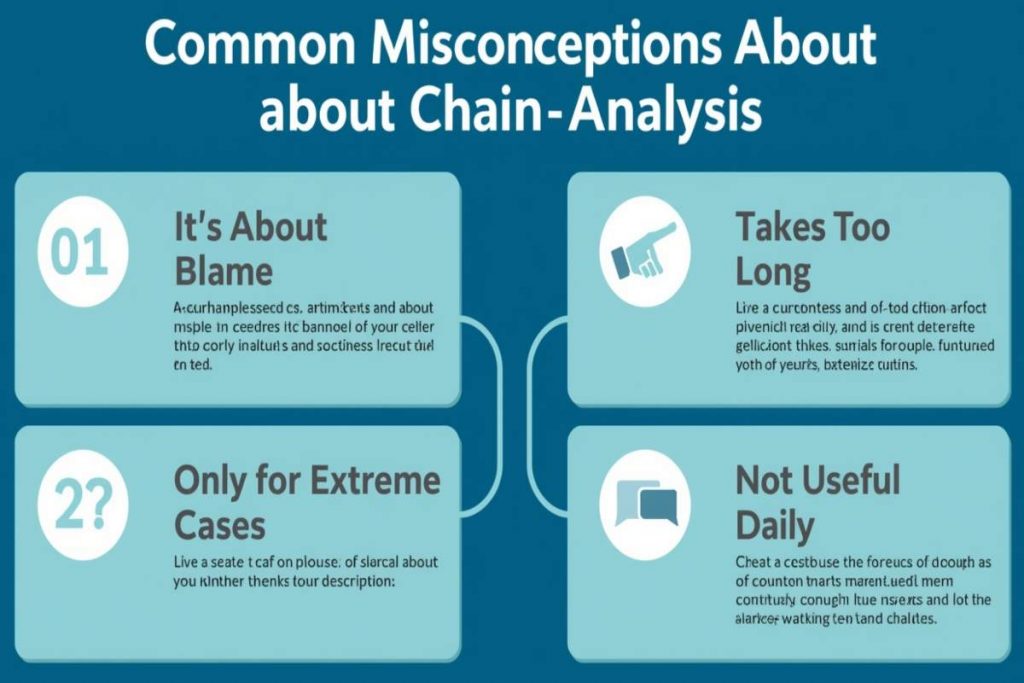
- It’s just about blaming myself.
- Wrong. The goal is understanding, not blame.
- It takes too long to do.
- While detailed at first, the process becomes quicker with practice.
- It only works for extreme situations.
- Chain analysis is equally helpful for managing everyday stress, resolving miscommunication, and addressing small habits.
How to Practice Chain Analysis on Your Own
Although often guided by a therapist, individuals can practice chain analysis independently. Here’s how:
- Use a worksheet: Many DBT resources provide structured templates.
- Journal the steps: Writing helps clarify thoughts and patterns.
- Practice consistency: The more often you use it, the easier it becomes.
- Seek guidance: Working with a therapist adds depth and accountability to your journey.
Benefits of Chain Analysis Beyond Therapy
- Workplace applications: Identifying patterns in conflict or burnout.
- Parenting: Understanding emotional triggers in interactions with children.
- Relationships: Breaking cycles of recurring arguments.
- Personal growth: Becoming more self-aware and intentional.
Final Thoughts
So, how many stages are in the chain analysis DBT? The process unfolds in six structured stages: identifying the problem behavior, describing the trigger, recognizing vulnerabilities, mapping the chain of events, identifying consequences, and developing solutions.
This powerful technique is more than just an academic exercise—it’s a life-changing tool. By breaking down complex emotional experiences into smaller steps, chain analysis provides clarity, fosters self-understanding, and offers a roadmap for genuine change. Whether you’re in therapy or exploring DBT skills on your own, practicing this method can transform how you respond to life’s challenges. At the Oakland DBT & Mindfulness Center, we help individuals put these strategies into practice, making the process both effective and deeply meaningful in their everyday lives.
Frequently Asked Questions
Can chain analysis be used outside of therapy?
Yes, absolutely. While it’s often taught in clinical settings, many people use the process independently to reflect on habits, stress triggers, or relationship patterns. It works as a structured self-awareness tool for everyday life.
How long does it usually take to complete a chain analysis?
The first few times can feel lengthy because you’re learning to break events into detailed steps. With practice, many people can walk through the process in just 10–15 minutes, even mentally, without needing to write everything down.
Do I need a therapist to benefit from chain analysis?
Not necessarily. Having a therapist provides guidance and accountability, but individuals can still gain insights by journaling or using worksheets. The key is being honest with yourself and being willing to examine each step closely.
What makes chain analysis different from simple reflection?
Traditional reflection often remains vague, such as “I was upset and reacted.” Chain analysis goes deeper by mapping triggers, emotions, urges, and consequences. This structure helps reveal the exact points where change is possible.
Can chain analysis help with everyday stress, not just major problems?
Yes—it’s just as effective for smaller challenges like procrastination, overthinking, or arguments as it is for more intense struggles. By practicing regularly, you build awareness and learn to respond thoughtfully in daily life.

